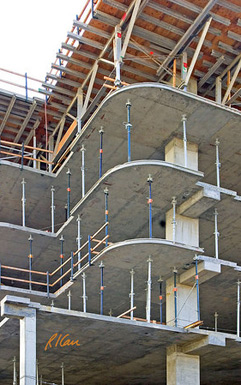Bay Area Concrete Aggregates |
|||
|
Specifying Concrete Aggregates In general, specifications should focus upon performance objectives such as strength, exposure and durability requirements, and water-cementitious ratio. Overly prescriptive specifications can limit creativity and increase costs. Consider allowing the concrete producer to select the aggregate sources and mix proportions that satisfy the engineering properties desired while taking advantage of the most economical combinations of materials. This could help maximize opportunities to utilize lower quality or recycled (not necessarily lower quality) materials when high performance is not required. As discussed, it is generally adequate to specify that concrete aggregates meet the requirements of ASTM C33, including the supplementary requirements for reactivity. The specification should include the maximum aggregate size, with consideration for member thickness and reinforcement congestion. For higher performance concrete, such as concrete with strengths higher than 6000 psi or low shrinkage requirements (less than 0.040% when tested in accordance with ASTM C-157) it is recommended to specify: the British Columbia import Sechelt, limestone form Cupertino, diabase from Clayton, or granite. When considering specifying to control shrinkage, it is important to specify that trial batch testing using the actual materials and proportions be performed sufficiently in advance so that mix adjustments can be made and retested if needed before construction. It is also important to understand that actual shrinkage of the concrete in service and in field cured tests will not necessarily correlate closely with the test results. |
 Home
Home
|
||
